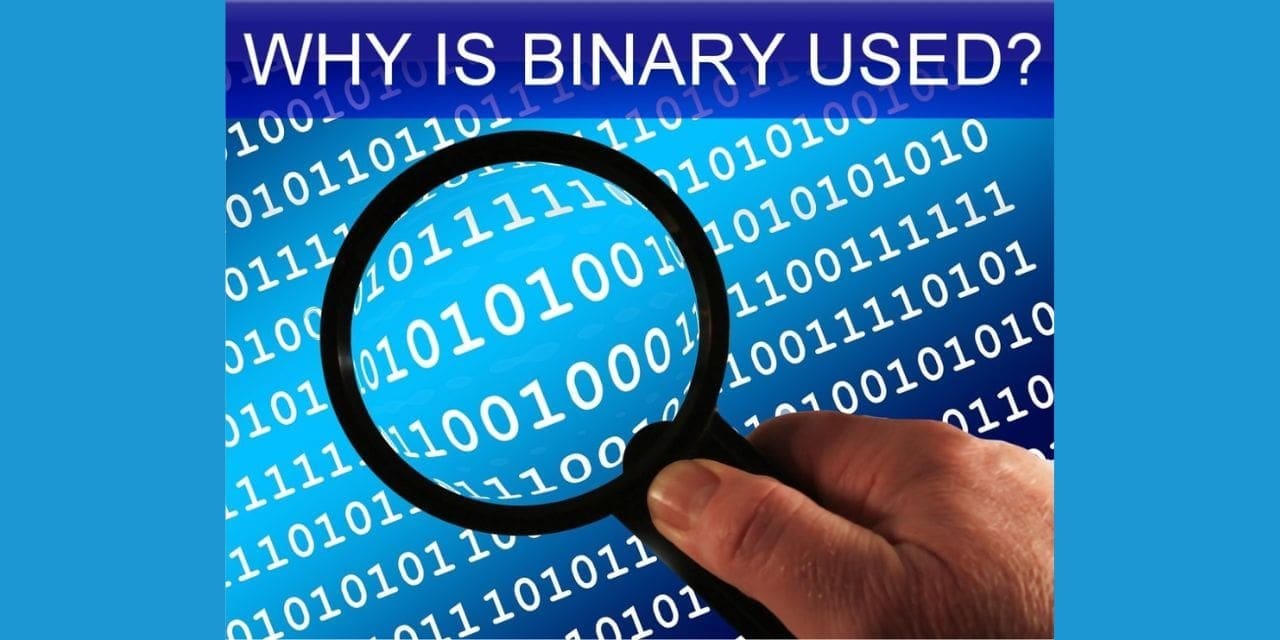Today’s computers, however powerful and performing, use decades-old logic principles to execute all kinds of programs.
While it might seem quite the opposite, computers don’t understand words and numbers the way we do. Modern software is pretty good at making us believe otherwise, but at the lowest level in the computer (as well as the smartphone or any other electronic device) everything is represented by a binary electrical signal that can only “exist” in two physical states well defined: on (if there is a passage of electric current) or off (if there is no passage of electric current). These physical states are represented in computer language by a binary system which allows the processor of any computer system to perform the operations underlying modern software and applications. Use an online binary translator to translate binary numbers easily.
What is a binary system?
When we talk about the binary system we are referring to a base 2 number system . That is, composed only of two digits (conventionally 0 and 1) which in computer language correspond to the physical states (on and off) of the transistors that make up the various chips. Most likely, the base-10 number system (or decimal system) is much more familiar. This number system consists of ten digits (conventionally 0, 1, 2, 3, 4, 5, 6, 7, 8 and 9) and uses their combinations to form all imaginable numbers. In the decimal system, each digit to the left of another is worth 10 times the one to its right (10 is worth ten times 1; 100 is worth ten times 10, and so on). The binary system is identical, except that each digit is worth twice as much as the preceding one. A binary translator helps you to translate binary numbers to characters binary text converter.
How does a binary system work?
Representing numbers in the binary system is, at least initially, a little more complex than what we are used to. In binary, the digit in the first position (rightmost) is 1 in the decimal system; the second digit (one position further to the left than the previous one) is 2 in the decimal; the third digit is 4; the fourth figure is 8 and so on, doubling each time. For example, the binary number 1111 equals the number 15 in decimal (that would be 8+4+2+1). If the “0” is added to this equation , we obtain that with the first four binary digits it is possible to represent the first 16 numbers of the decimal system(0000 corresponds to 0; 0001 corresponds to 1; 0010 corresponds to 2; 0011 corresponds to 3; 0100 corresponds to 4 and so on up to 1111=15).
Why the binary system
It is natural to ask the question: why choose the binary system to represent computer language ? Because for a computer, made up of transistors and chips, it is much easier to “count” in base 2 than in base 10. At the dawn of modern computing (we are talking about the immediate post-war period), measuring and controlling electrical signals precisely was much more complex than today. For the pioneers of computer science (such as Von Neumann or Alan Turing) it was much easier and more sensible to summarily distinguish between “On” and “Off” (or “0” and “1” in a binary context) rather than between ten different current intensities (measurement practically impossible with the instruments of the time) . This has led computers to represent numbers and letters through the combination of different binary states generated by the passage (or interruption) of electric current through a transistor (i.e. a memory cell).
This system, in fact, has made it easier to use the principles of Boolean logic (and its main operators AND, OR, XOR and so on) to carry out more and more complex operations and instructions. The transistors that make up the chips of a computer (often called doors or gates , since they open or close to allow or prevent the passage of the flow of electrons) take two inputs and combine them together to perform one of the operations of logic boolean, so as to obtain another input to be “delivered” to the next transistor.

